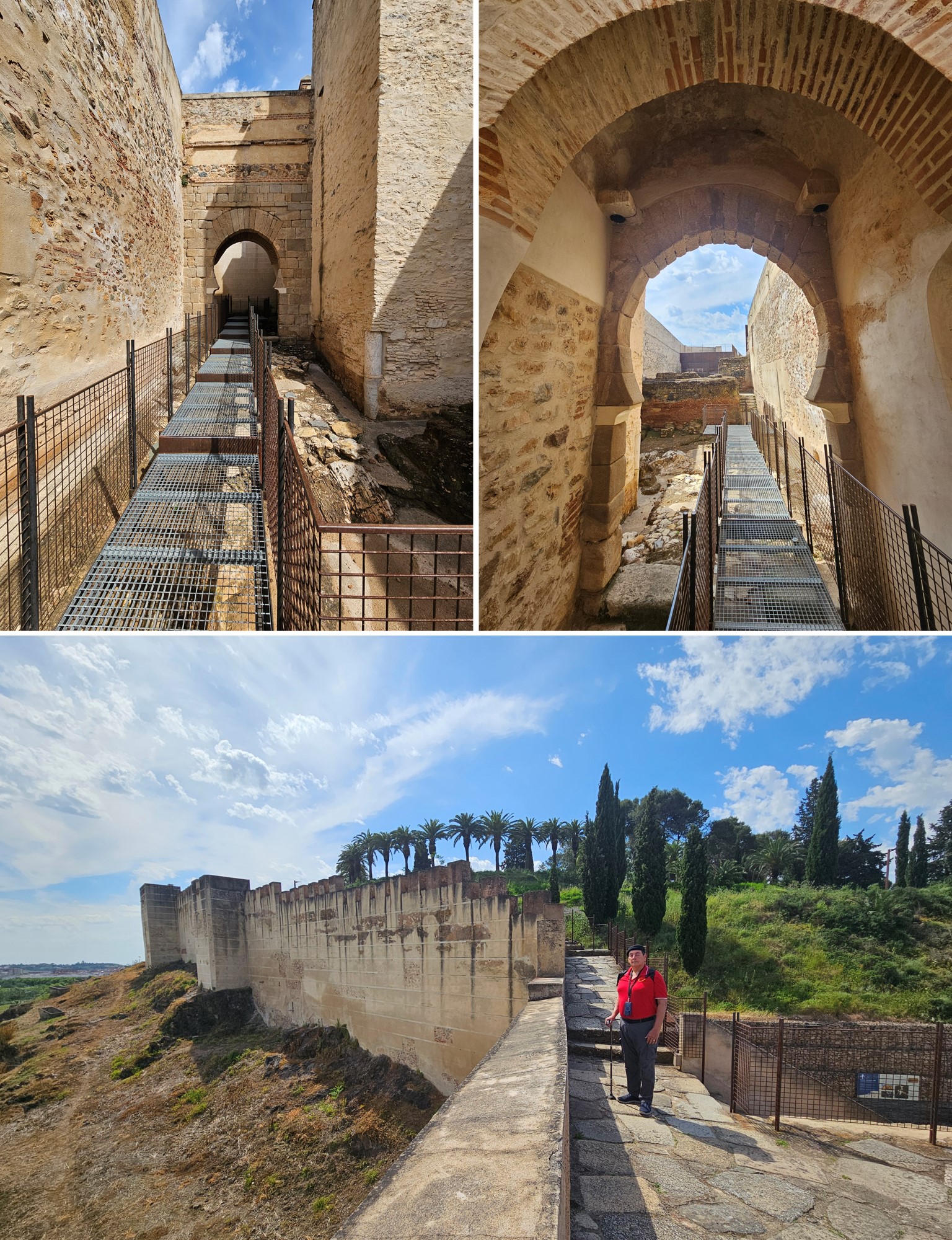Muslim history left a significant mark on Spain, especially in Andalusia, but also in other regions like Extremadura. A clear example is Badajoz, where its wall, or “alcazaba,” witnessed the city’s beginnings, founded in the 9th century. At that time, Badajoz was one of the most important cities during its Muslim period. In 1931, the Alcazaba was declared a Historical-Artistic Monument, and recent restoration work has uncovered new towers and details that make it even more valuable.
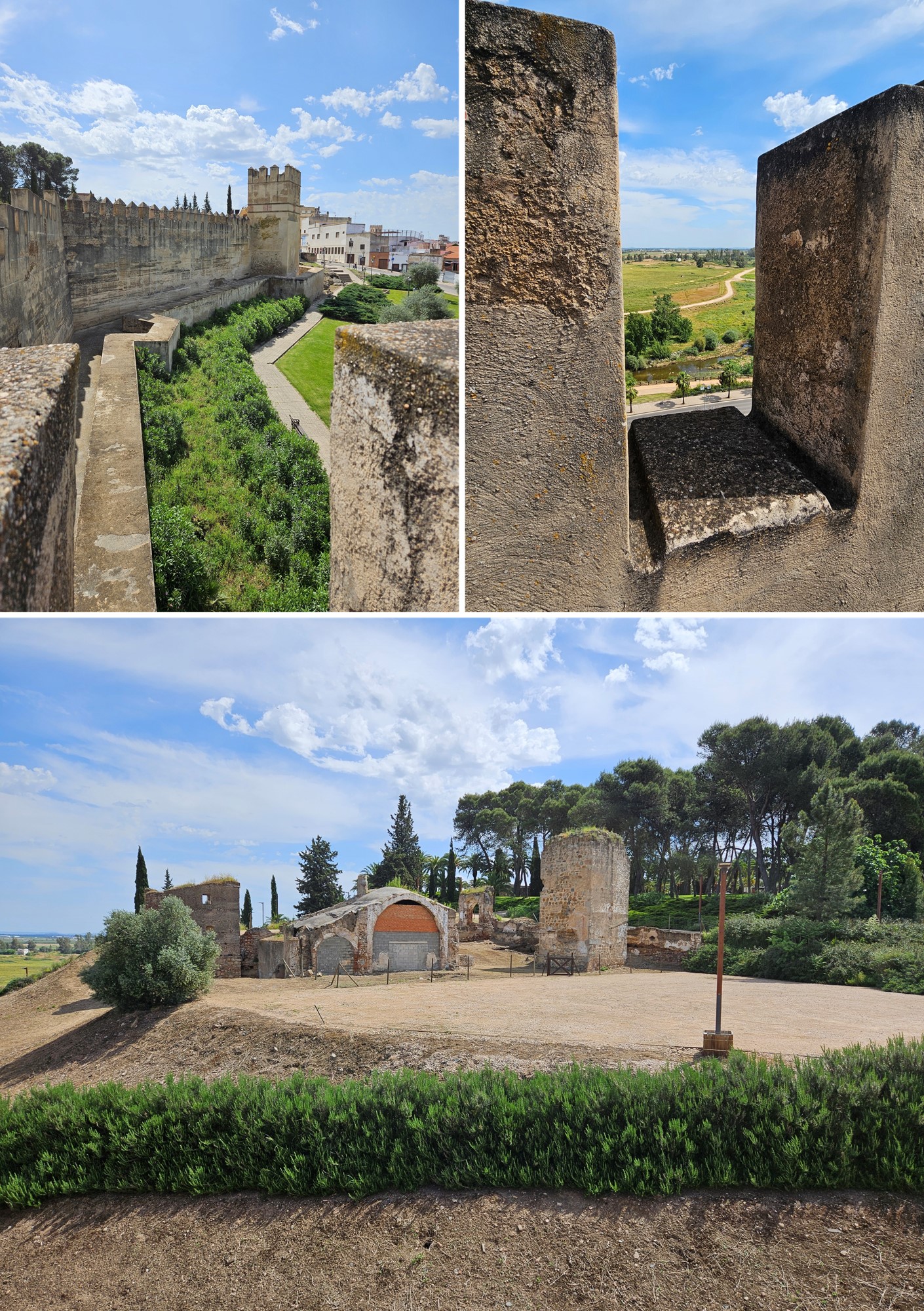
Over time, this fortress underwent some changes, especially in the 12th century when the Almohads reinforced it. But these changes did not make it any less simple or effective. The Alcazaba remains in very good condition, being the oldest military construction in Badajoz, the largest of its kind in Spain, and one of the largest in the world.
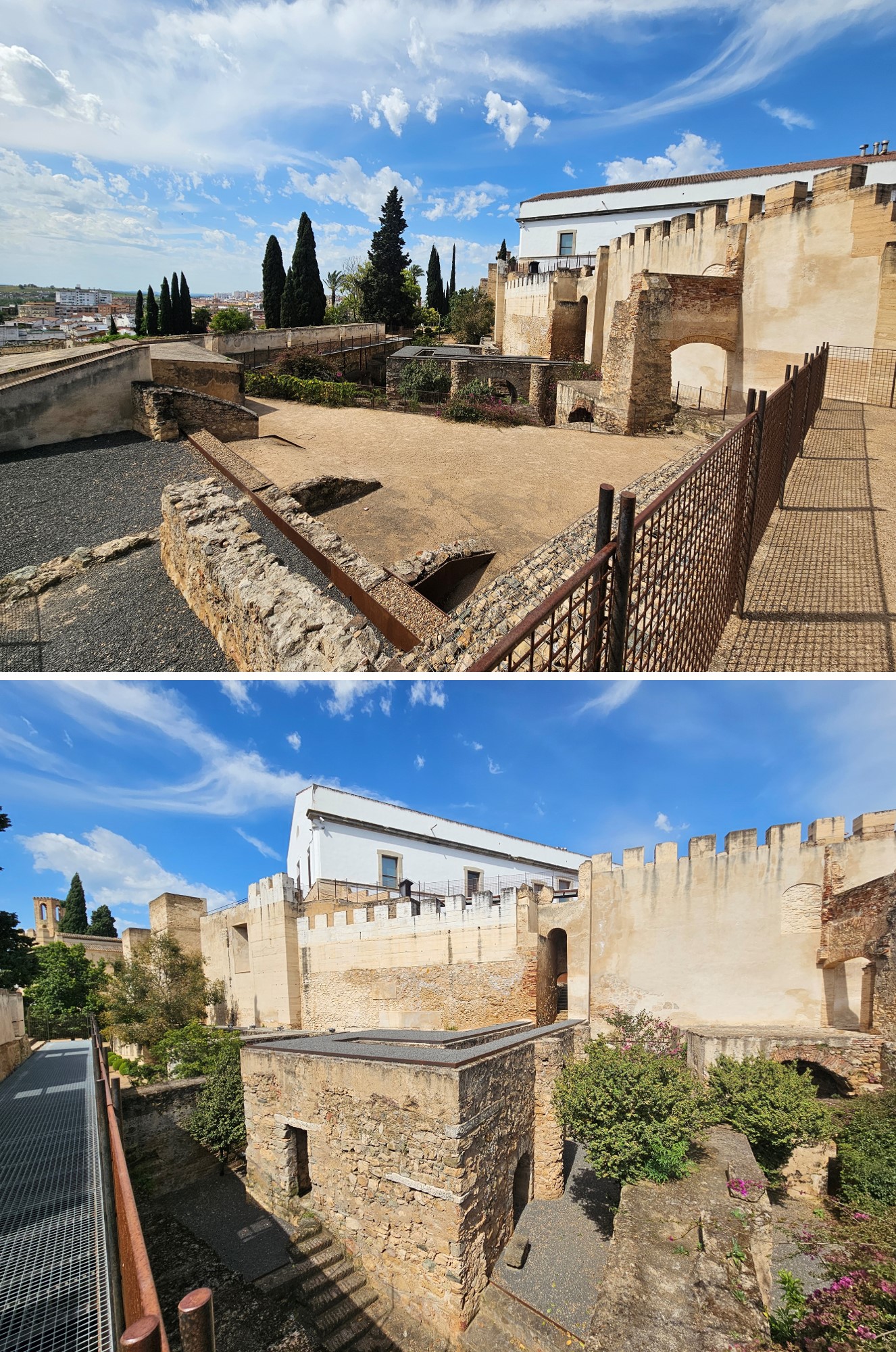
The Alcazaba of Badajoz has features that made it difficult to conquer, partly due to the shape of the terrain. Although the Rivillas and Guadiana rivers create some uneven ground, the Alcazaba’s walls were built intelligently and robustly. This walled enclosure had four main gates: the Alpéndiz Gate, the Capitel Gate, the Yelves Gate, and the Coraxa Gate. The first two, built during the Almohad period, were designed with a “bend” to make it harder for enemies to enter.
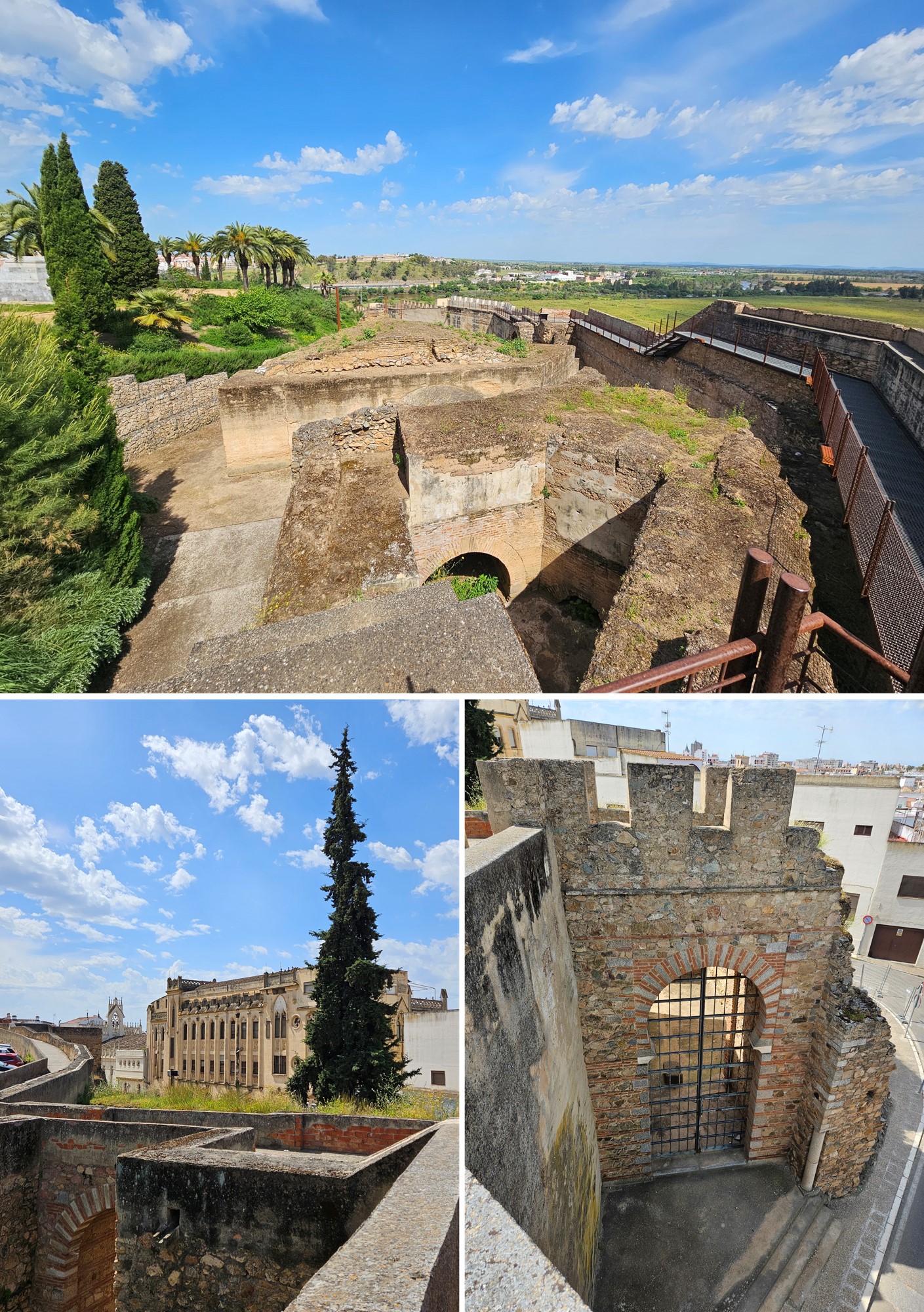
In terms of shape, the Alcazaba of Badajoz is oval and measures over 600 meters in total. It extends up to about 1,200 meters and covers roughly 8 hectares of land. The materials used in its construction were brick, stone, masonry, and mortar. The top of the wall features a walkway, called the adarve, which connects all the towers and allows visitors to walk along and monitor the entire area.

The most important tower is the Torre de la Atalaya, also called Torre de Espantaperros, built in the 12th century in an octagonal shape. Other important towers include the Torre de los Acevedo, the Torre de la Horca, and the Torre de Santa María, which was recently restored.
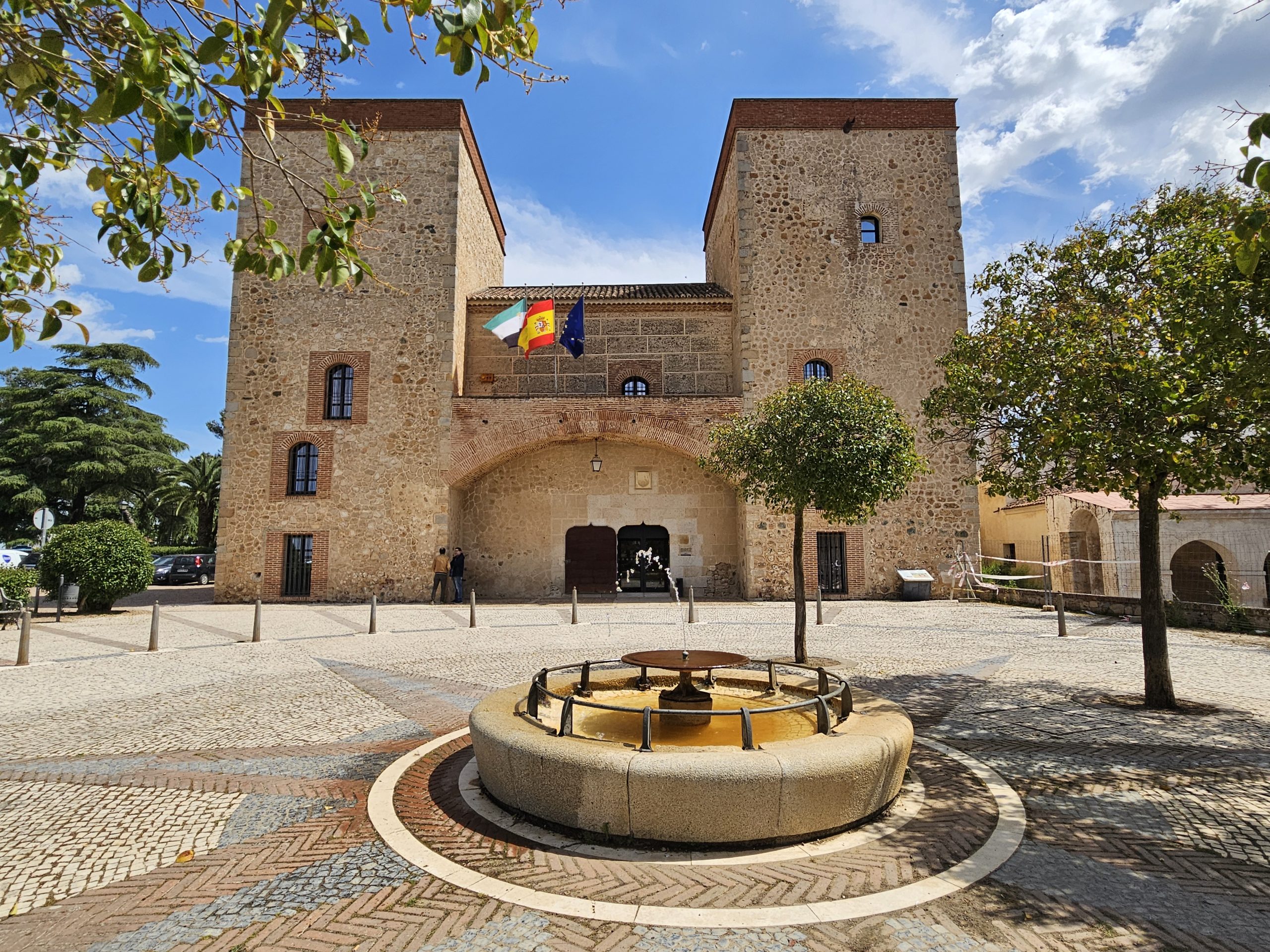
Inside the Alcazaba, you can visit the Palace of the Counts of Roca, now home to the Provincial Archaeological Museum of Badajoz. Additionally, visitors can stroll through the gardens, see the remains of a church built over the ruins of the old main mosque (the Torre de Santa María), or visit the Tower of the Episcopal Palace and the Extremadura Library.

From the Alcazaba, the views of Badajoz are breathtaking, helping visitors understand its strategic importance for defense and appreciate the Muslim legacy in Spain. From there, you can see the Puente de Palmas and the Convent of San José, built in 1917 around the chapel of the original hermitage.
